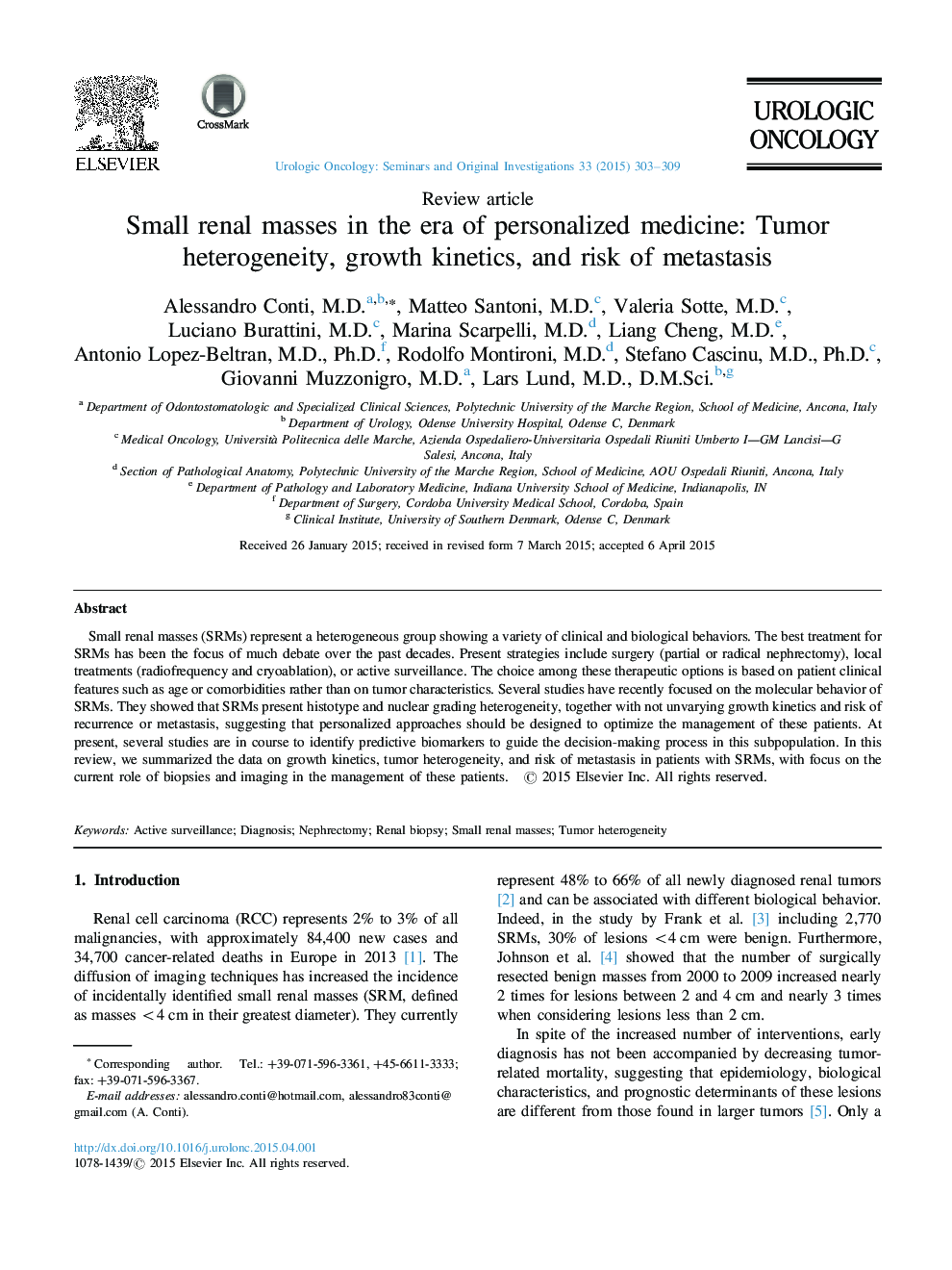| Article ID | Journal | Published Year | Pages | File Type |
|---|---|---|---|---|
| 3999597 | Urologic Oncology: Seminars and Original Investigations | 2015 | 7 Pages |
Small renal masses (SRMs) represent a heterogeneous group showing a variety of clinical and biological behaviors. The best treatment for SRMs has been the focus of much debate over the past decades. Present strategies include surgery (partial or radical nephrectomy), local treatments (radiofrequency and cryoablation), or active surveillance. The choice among these therapeutic options is based on patient clinical features such as age or comorbidities rather than on tumor characteristics. Several studies have recently focused on the molecular behavior of SRMs. They showed that SRMs present histotype and nuclear grading heterogeneity, together with not unvarying growth kinetics and risk of recurrence or metastasis, suggesting that personalized approaches should be designed to optimize the management of these patients. At present, several studies are in course to identify predictive biomarkers to guide the decision-making process in this subpopulation. In this review, we summarized the data on growth kinetics, tumor heterogeneity, and risk of metastasis in patients with SRMs, with focus on the current role of biopsies and imaging in the management of these patients.
